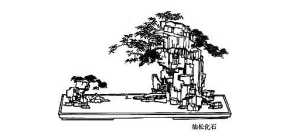The impact of Hindu culture deeply inspired Philippine lifestyle.
The sarong ( skirt ) and the putong ( turban ) donned by the early Filipinos ( Pinoy ) and the embroidered shawls continue to donned by today’s Muslim Filipino women are a Indian impact . It has been estimated that nearly 30 percent of the Tagalog words and phrases are derived from Sanskrit, India’s ancient language which significantly indluenced the current European languages similar to English and German. Just a few Sanskrit words in Tagalog are Bathala ( the supreme God ), dala ( fishnet ) , asawa ( spouse ), mama ( man ), diwa ( thought ), puri ( honor ), mata ( eye ), likha ( creation ), lakambini ( princess ), kuta ( fortress ), and wika ( language ). The use of brass, bronze, copper and tin in the decorative arts and metalwork of the earlier Filipinos is also a Indian influence. The boat-shaped lute, a musical instrument even now played by Muslim Pinoys, is of Indian origin.
Early Filipino folklore and literature also present intensive Indian influences. The Maranaw epic Darangan is Indian in both of plot and characters. Balituk, the story of the Ifugao legendary hero, is just like Arjuna’s exploits in the Mahabharata, the terrific Hindu epic. The Agusan legend of a man known as Agnio, resembles the tale of Ahalya in the Ramayana, another great Hindu epic. An eclipse is called laho in Tagalog and Kapampangan. The Philippine people faith is to the impact that an eclipse occurs when the sky dragon swallows and bites the moon or the sun. Old folks tell that the eclipsed moon is red because the sky dragon laho has bitten it, making it bleed, and the folk stampede in into releasing the moon by beating on cans and drums. The marks one finds out on the face of the newly risen moon are said to have been made by the teeth of the dragon that bites it every time it can, and the Hindu god that causes eclipses by biting the moon or the sun is Rahu.
From the Chinese, the early Filipinos learned how to use porcelain ware, umbrellas, production of gunpowder, and specific mining techniques. The loose style in the early Filipino style of dressin, the sleeved jackets and loose trouser of the Muslim Filipino women and the use of slippers show Chinese influence also. As well of Chinese origin was the wearing of yellow dress by the nobles and of blue clothes by the commoners in pre-Spanish Philippine society. The wearing of white dresses and the use of a white background in mourning and burial ceremonies is another Chinese impact.
Several Chinese words exist in the Tagalog language. Among these include sangko ( elder brother ) , pansit ( noodles ) , tinghoy ( oil lamp ) , hibi ( dried shrimp ) , petsay ( Chinese cabbage ) , dikyam ( dried fruit ) , ampaw ( cereal ) , and susi ( key ) . The surnames of a great many Filipino families are of Chinese origin, such as Cojuangco, Lim, Tan, Limjoco, Tongko, Juico and Ongsiako.
Equally important was the adoption by the early Filipinos of certain Chinese traditions. Among those are the arrangement of marriages by the parents of the prospective groom and bride, the practice of employing a go-between in proposing a marriage, and the deep respect accorded by the children to their parents and other elders.
The Japanese developed some important contributions to Philippine life too. They introduced the early Filipinos certain businesses such as the manufacture of arms and equipment’s, the tanning of deerskin, and the unnatural breeding of ducks and fish.
The most significant gift of the Arabs to the life of Muslim Filipinos was Islam, still a living religion in Mindanao and Sulu. The calendar, law, form of government, art, and literature of the Muslim Filipinos are of Arabic origin. The sarimanok design and style in Maranaw decorative art has an Arabic origin. Many tales in Maranaw and Tausug literature are derived from Arabian tales. Finally , there are some Arabic words found in the Tagalog language, such as alam ( know ), sulat ( letter ), salamat ( thanks ), hukom ( judges ), and piklat ( scar ).
Companies who seek to expand their services to a Japanese-speaking market mostly seek English to Japanese translation services. And why shouldn’t they? Japan is without a doubt at the forefront of global trade and offers the perfect economic environment for every business that wants to make it big. But language is a major factor, even when you are dealing with Japanese companies in your home country.
Related:
Interesting Facts about the Korean Language
Importance of Arabic Language in Today’s Global Business Market
Difference between English and Russian Language
